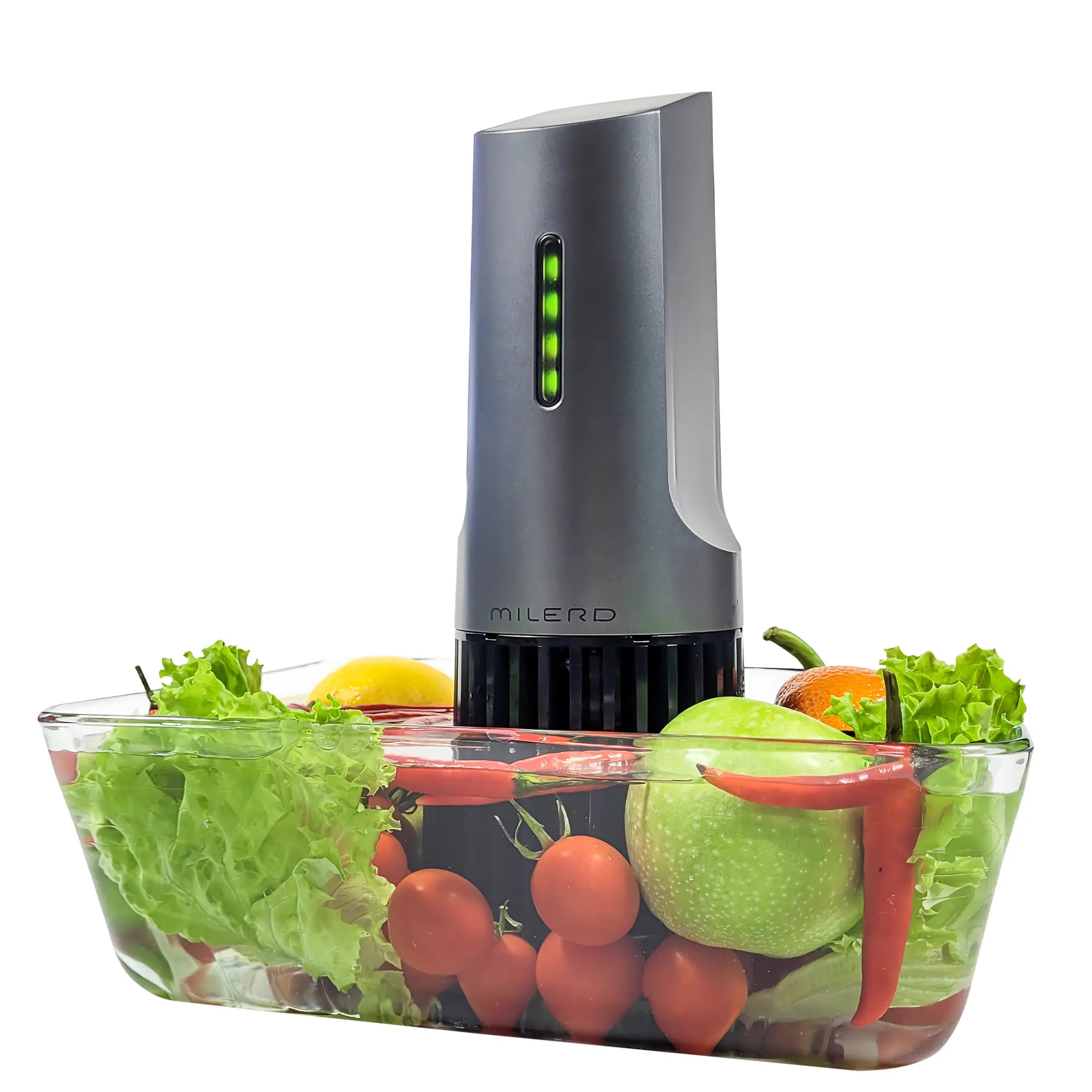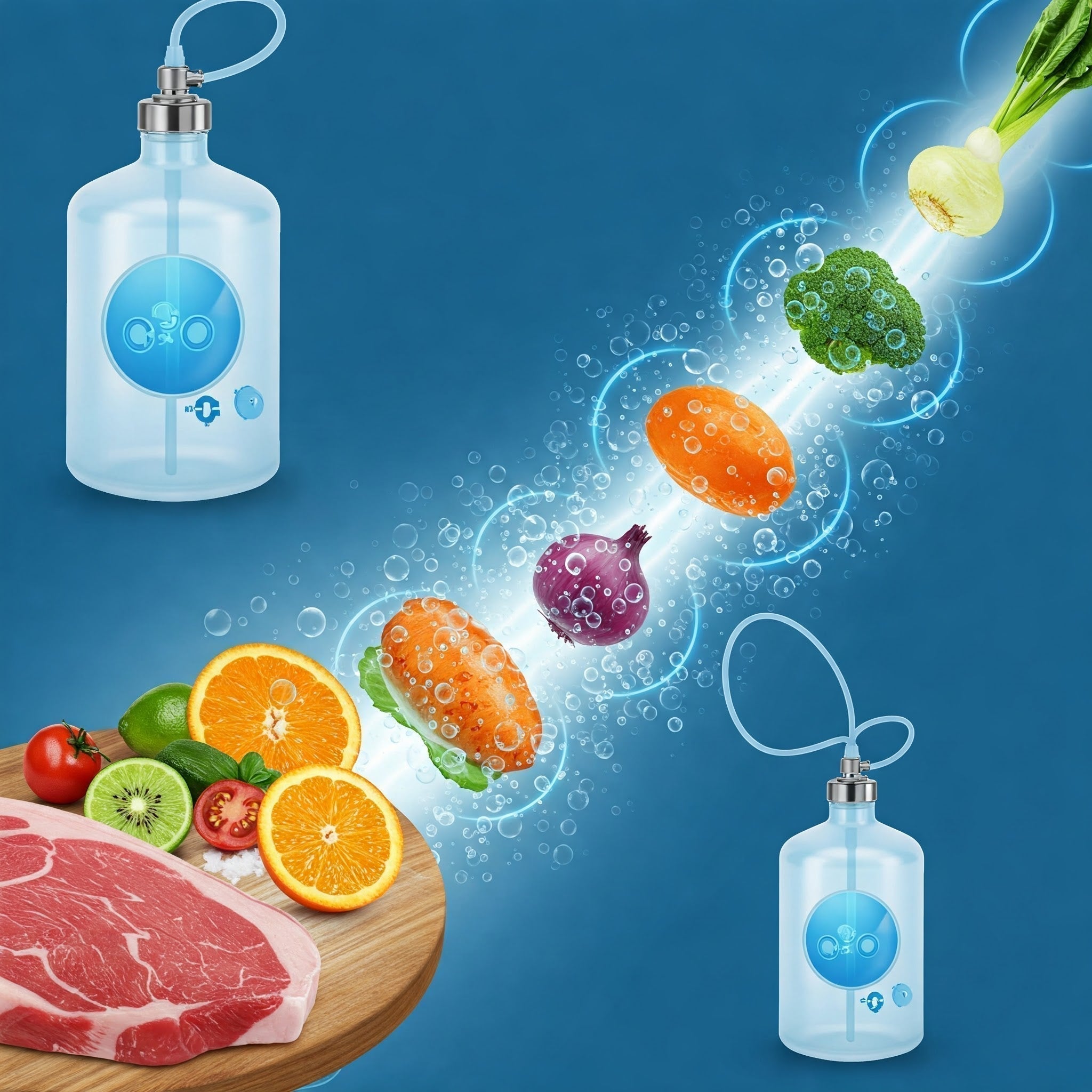Yes, Escherichia coli (E. coli) can kill you; specifically, certain harmful strains like E. coli O157:H7. These can lead to severe health issues, including kidney failure and death. This article explores the health risks posed by E. coli, the symptoms to watch for, and crucial preventive measures to protect yourself, emphasizing the question: can Escherichia coli kill you?
Key Takeaways
-
Some strains of E. coli can cause severe illness, with E. coli O157:H7 being particularly dangerous and potentially leading to complications like Hemolytic Uremic Syndrome (HUS).
-
Vulnerable populations, including young children, the elderly, and individuals with weakened immune systems, are at higher risk for severe E. coli infections and related complications.
-
Effective prevention strategies include safe food handling practices and diligent personal hygiene, such as regular handwashing and using tools like the Milerd Detoxer to enhance food safety.
Understanding Escherichia Coli (E. coli)

E. coli, short for Escherichia coli, exists naturally within human and animal intestines and in the environment. Although a healthy digestive tract depends on many E. coli strains without causing harm, certain types of these bacteria can result in significant health problems. Six specific E. coli variants are known to induce diarrheal diseases in humans, with the infamous strain being E. coli O157:H7.
This bacterium’s transmission routes include consuming contaminated food or water and exposure to infected animals or individuals—particularly where sanitation is lacking—making it highly transmissible under suboptimal hygiene conditions. E. coli bacteria can contaminate food through various sources such as undercooked meat, untreated milk, and contaminated fruits and vegetables, emphasizing the importance of proper food handling and hygiene practices.
Infections from pathogenic E. coli strains extend beyond diarrhea. They can provoke respiratory illnesses like pneumonia, infections within the urinary tract system, and serious intestinal complications. Coli outbreaks can arise from contaminated water sources, outlining the risks associated with municipal water supplies and private water wells. Despite efforts to disinfect public water systems, certain outbreaks have still been linked to contaminated water, particularly in rural areas and during recreational activities in contaminated bodies of water. Recognizing its potential effects on our health is a vital measure for safeguarding ourselves and others against this virulent microbe.
Symptoms of E. coli Infection
Typically, an infection caused by E. coli presents a spectrum of uncomfortable and at times acute symptoms. The usual indications are:
-
discomfort in the abdomen
-
feelings of nausea
-
intense abdominal cramping
-
episodes of vomiting
-
bouts of diarrhea

Infections with the particular strain known as E. coli O157 can often lead to extreme abdominal cramps along with diarrhea that contains blood, with approximately half of those who contract it experiencing this distressing sign.
The onset time for symptoms following exposure to an E. coli infection ranges from 1 to 14 days, but more commonly occurs between day 3 and day 4 after eating contaminated food. This variation in symptom appearance may hinder identification efforts regarding the source, thus complicating outbreak management measures. Once present, these signs usually persist up to a fortnight. Most instances resolve within seven days.
E. coli infections can cause food poisoning, which underscores the importance of safe food handling practices to prevent illness. It is vital to acknowledge these indicators promptly when they consist notably of severe stomach cramps coupled with bloody diarrhea since these point toward a gravely serious form of the infection. Seeking medical help immediately can assist in symptom control and averting health issues. Swift recognition followed by timely treatment remains critical for affected individuals.
When E. coli Can Be Deadly
Numerous E. coli infections may subside without intervention. Certain instances escalate into serious medical issues like Hemolytic Uremic Syndrome (HUS). HUS predominantly stems from the E. coli O157:H7 variant and poses a grave threat by potentially causing kidney failure.
Coli infections treated vary based on the severity of the infection and the affected body part. For those with mild symptoms, hydration is often recommended, and most cases resolve on their own within a week to ten days. However, it is important to avoid certain medications unless advised by a doctor.
Between 5% and 10% of individuals with an E. coli infection might experience HUS development, particularly in groups more susceptible to this condition. If someone exhibits symptoms such as diminished urine output, exhaustion, or swelling, it’s imperative they seek prompt medical care due to the seriousness of these signs. Treating HUS often requires hospital admission and could necessitate interventions such as blood transfusions or dialysis.
While recovery is possible for many who contract HUS after an E.coli infection, there remains a risk that some cases can be deadly. Long-term health consequences are also associated with this complication. Early recognition of symptoms coupled with swift medical treatment significantly improves chances for those affected by the severe outcomes resulting from E.coli-related complications like HUS.
Risk Factors for Severe Illness
Some populations are particularly susceptible to serious health issues resulting from E. coli infections, including children under the age of five and those with compromised immune responses, which increase their risk for dire outcomes such as Hemolytic Uremic Syndrome (HUS).
People over 65 years old face an elevated threat of severe reactions to E. coli owing to diminished immunity and existing medical conditions. Individuals living with chronic illnesses like cancer or diabetes also have a heightened susceptibility to critical ailments caused by E. coli due to their impaired immune systems.
In summary, the most vulnerable groups facing significant risks from E. coli infections encompass young kids, senior citizens, and anyone with a weakened immune system. It is crucial to acknowledge these factors in order to implement preventative measures that safeguard these at-risk segments against life-threatening consequences.
Diagnosis and Treatment of E. coli Infections

Diagnosing E. coli infections typically involves a combination of physical examination, medical history, and laboratory tests. A healthcare provider may perform a stool test to check for the presence of E. coli bacteria. In some cases, a blood test may be ordered to check for signs of kidney damage or other complications.
Treatment for E. coli infections usually focuses on relieving symptoms and preventing complications. In mild cases, treatment may involve:
-
Fluid replacement to prevent dehydration
-
Rest and relaxation
-
Over-the-counter medications to manage symptoms such as diarrhea and abdominal cramps
In more severe cases, treatment may involve:
-
Hospitalization to manage dehydration and prevent complications
-
Antibiotics to treat secondary infections
-
Supportive care, such as oxygen therapy and pain management
It’s essential to note that antibiotics are not typically used to treat E. coli infections, as they can increase the risk of complications such as hemolytic uremic syndrome (HUS). Therefore, managing symptoms and preventing dehydration are crucial steps in the treatment process.
E. coli Infection and Sepsis
E. coli infections can lead to sepsis, which can be fatal if not treated promptly and effectively.
Symptoms of sepsis may include:
-
Fever or hypothermia
-
Rapid heart rate
-
Rapid breathing rate
-
Confusion or disorientation
-
Abdominal pain or tenderness
If you or someone you know is experiencing symptoms of sepsis, it’s essential to seek medical attention immediately. Treatment for sepsis typically involves:
-
Antibiotics to treat the underlying infection
-
Fluid replacement to manage dehydration
-
Oxygen therapy to support breathing
-
Supportive care, such as pain management and wound care
Early recognition and prompt treatment are critical in managing sepsis and improving outcomes for those affected by E. coli infections.
E. coli Infection and Haemolytic Uraemic Syndrome (HUS)
Haemolytic uremic syndrome (HUS) is a rare but serious complication of E. coli infections. HUS occurs when the E. coli bacteria produce a toxin that damages the kidneys and causes them to fail.
Symptoms of HUS may include:
-
Bloody diarrhea
-
Abdominal pain
-
Vomiting
-
Fatigue
-
Pale skin
-
Shortness of breath

If you or someone you know is experiencing symptoms of HUS, it’s essential to seek medical attention immediately. Treatment for HUS typically involves:
-
Hospitalization to manage dehydration and prevent complications
-
Dialysis to support kidney function
-
Blood transfusions to replace damaged red blood cells
-
Supportive care, such as pain management and wound care
Preventing E. coli infections is crucial to reducing the risk of complications such as HUS. This can be achieved by:
-
Practicing good hygiene, such as washing hands regularly
-
Avoiding contaminated food and water
-
Cooking food thoroughly to prevent contamination
-
Avoiding unpasteurized milk and raw fruits and vegetables
-
Avoiding close contact with individuals who have E. coli infections
By understanding the risks and taking preventive measures, you can significantly reduce the likelihood of developing severe complications from E. coli infections.
Preventing E. coli Infections
To safeguard against E. coli infections, it’s essential to employ a blend of prudent food preparation habits and stringent personal cleanliness routines. By adopting these preventative approaches, one can substantially lower the likelihood of encountering E. coli contamination and ensure their well-being is preserved.
Below you will find several potent tactics worth taking into account for this purpose.
Safe Food Handling Practices

Practicing proper food safety measures is vital to avert infections caused by E. coli. Raw meat, especially ground meat, can be a significant source of contamination. Adequately heating ground beef to appropriate temperatures can eradicate dangerous microbes. Employing a meat thermometer guarantees that the meat attains a safe internal temperature, mitigating the risk of contamination.
Cleansing raw fruits and vegetables under clean running water can strip away soil, bacteria, and other potential contaminants that may taint food, which is particularly important when consuming these foods raw. Maintaining separate chopping boards and tools for handling uncooked and cooked items helps avoid cross-contamination.
Consuming raw milk poses significant risks as it can harbor E. coli bacteria, leading to severe gastrointestinal illnesses and other health complications.
Cutting-edge solutions such as the Milerd Detoxer significantly boost food cleanliness by obliterating up to 99% of harmful toxins, ensuring an exhaustive cleanse without affecting flavor or nutritional value.
Personal Hygiene
Maintaining strict personal hygiene by frequently washing hands with hot soapy water before and after food preparation, following restroom use, and after touching animals is crucial in halting the transmission of E. coli.
Adhering to proper hygiene measures ensures individual protection from person-to-person spread of E. coli infections.
Innovative Solutions for Food Safety
The Milerd Detoxer introduces an advanced level of safeguarding, utilizing ultrasonic waves coupled with active oxygen to purify food from harmful contaminants.
How the Milerd Detoxer Works

Utilizing ultrasonic waves combined with active oxygen, the Milerd Detoxer effectively purifies food items. These high-frequency vibrations generate tiny bubbles that remove impurities attached to the surfaces of foods.
Active oxygen fosters an oxidizing atmosphere capable of decomposing dangerous elements such as bacteria and pesticides down to their molecular structure, thus ridding foodstuffs of viruses, bacteria, pesticide residues, heavy metals, mold spores and eggs from parasites.
Employing both ultrasonic waves and active oxygen grants the Milerd Detoxer a powerful capability in cleansing edibles by stripping away numerous types of pollutants.
Benefits of Using the Milerd Detoxer
The Milerd Detoxer is capable of eliminating as much as 99% of harmful toxins from food, safeguarding your meals against hazardous chemicals, microorganisms, and parasites while retaining vital nutrients.
Due to its portable design, the Milerd Detoxer offers practicality for both at-home use and when you’re mobile, allowing you to maintain food safety during travel or while indulging in alfresco dining.
Integrating the Milerd Detoxer into your daily kitchen practices delivers tranquility by ensuring that your meals are meticulously purified and secure for eating.

Summary
Understanding E. coli and its potential dangers is essential for maintaining good health. By recognizing the symptoms of E. coli infections and knowing the risk factors, you can take proactive steps to protect yourself and your family. Safe food handling practices and good personal hygiene are key preventive measures that can significantly reduce the risk of E. coli contamination.
Innovative solutions like the Milerd Detoxer provide an additional layer of protection by effectively purifying food and eliminating harmful toxins. This advanced technology ensures that your food is safe to eat, whether at home or on the go.
Stay informed, practice good hygiene, and utilize advanced food safety technologies to keep E. coli at bay. Together, we can create a safer and healthier environment for everyone.



Leave a comment
This site is protected by hCaptcha and the hCaptcha Privacy Policy and Terms of Service apply.